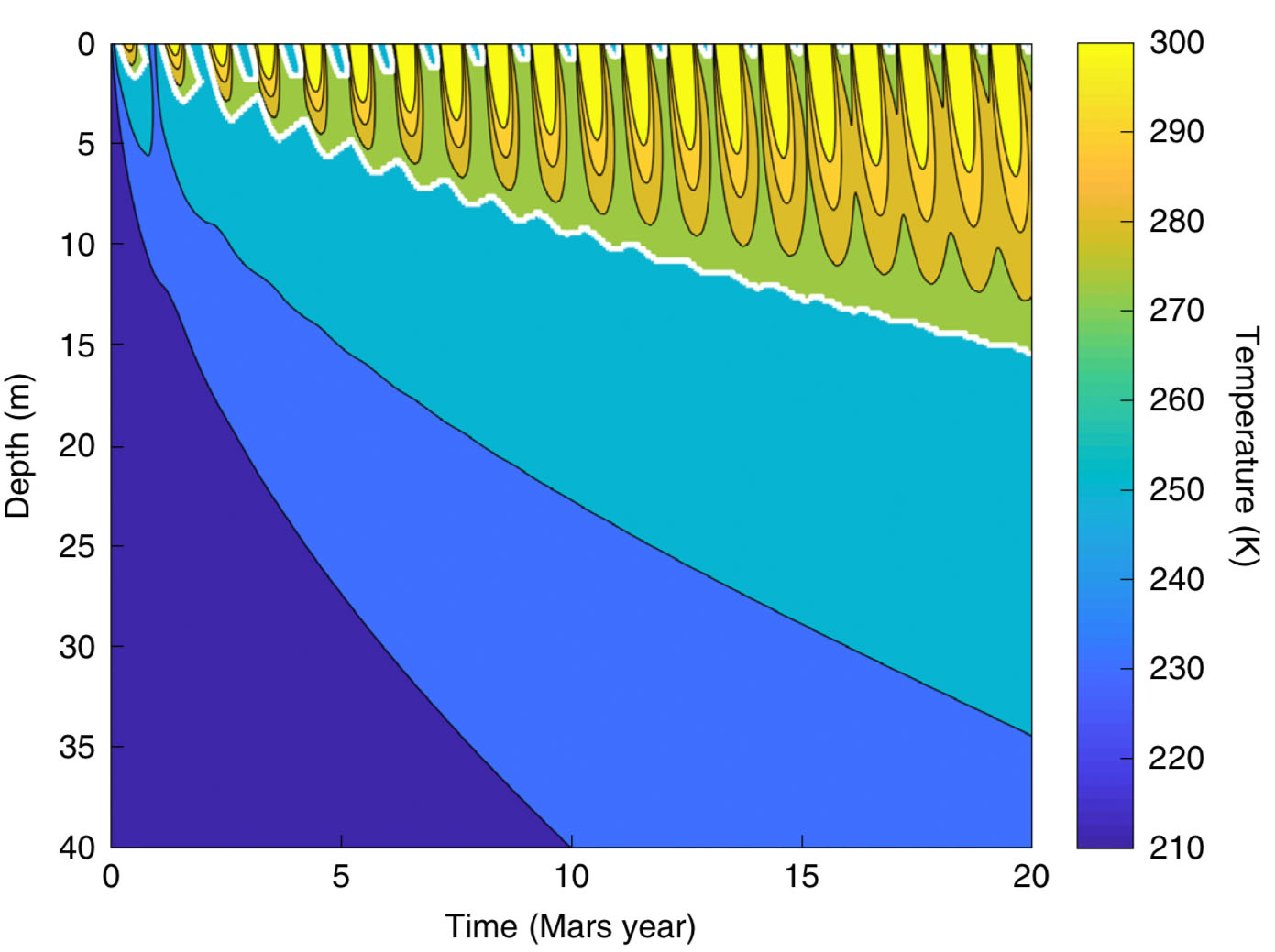Transforming Mars into a second Earth – a simple trick
In the journal Nature Astronomy, researchers have presented an exciting method for transforming Mars into a fertile planet: they want to cover our neighbor with a thin layer made of silicate aerogels.
How is that supposed to work? The Red Planet has two properties that make the existence of life on its surface more difficult. First, it is significantly too cold there, and second, life can be destroyed by the cosmic radiation that is incident on the Mars surface in much higher amounts than on the Earth due to Mars’s thin atmosphere. If we wanted to create Earth-like conditions, for example, liquid water on the surface of Mars, we’d have to raise the average temperature by approximately 50 degrees Celsius.
There are actually plans to do this; if the CO2 in deposits at the poles and in the ground could be released into the atmosphere, this could trigger a greenhouse effect like the one that is responsible for climate change here on Earth. This would be a welcome result on Mars. However, it is questionable whether the existing amount of CO2 is enough; and then the planet must also be able to sustain its new, thicker atmosphere. There were reasons why Mars lost its thicker atmosphere over the last billions of years.
The authors of the Nature Astronomy paper thus propose a different way. The want to generate a local greenhouse effect directly above the ground, by “building” a “greenhouse” made from silicate aerogels. Aerogels are extremely porous solids; more than 97 percent of their volume is air. They are thus, one, very lightweight, two, poor heat conductors, and three, transparent enough that the ground below them can be warmed and illuminated by the little sunlight that reaches Mars (which is important for photosynthesis). At the same time, the layer provides protection from UV radiation.
Robin Wordsworth and his colleagues have already shown in the lab that this is not just some fantasy. A two- to three-centimeter-thick layer of silicate aerogel can raise the temperature of the ground by 50 degrees Celsius. At the middle latitudes of Mars, that would be enough to thaw the ground up to a depth of several meters, so that liquid water would be possible there. At the same time, UV-A and UV-B radiation would be weakened and UV-C would even be blocked completely.
The required material can be produced relatively easily and economically. However, the researchers also propose including life in the production. Diatoms, for example, produce amorphous silicate particles in the nanometer range, which might be able to form a protective carpet. This idea might still fail if one condition is met: if extant life is found at some point on Mars, it might be problematic to suggest replacing this Martian life by Earth flora.
